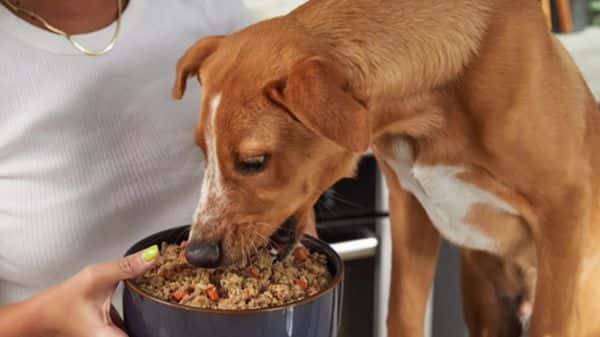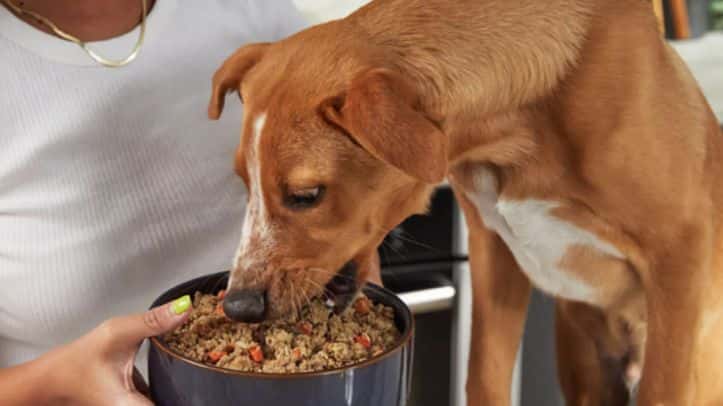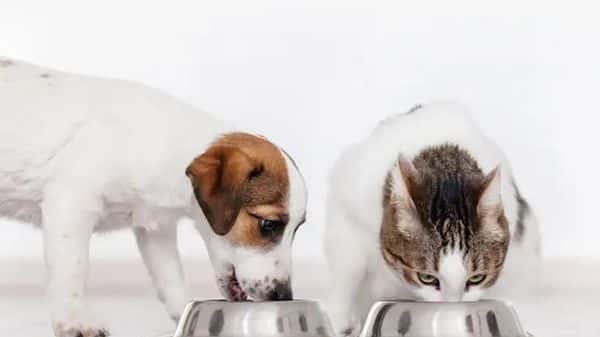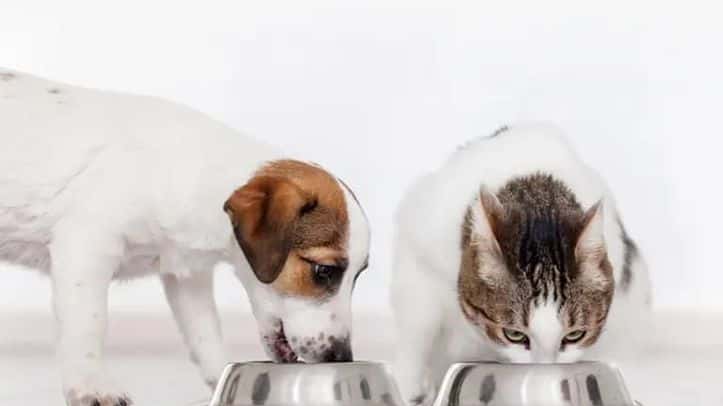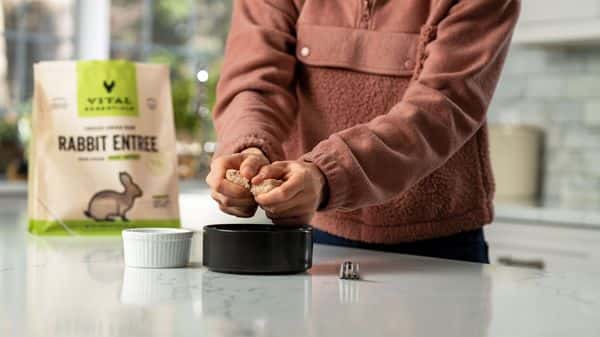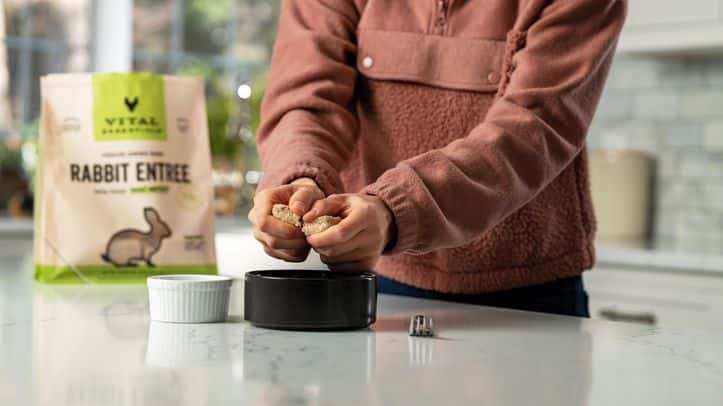
The Meat of the Matter: Premium Proteins for Cats
10.24.2016

Feline nutrition trends include premium proteins, innovative packaging and tasty snacks for finicky eaters.
When it comes to nutrition trends, cats might be clawing some of the spotlight away from dogs.
While dog owners have been shopping for raw foods, premium proteins and meals that contain no artificial ingredients, many cat owners simply relied on foods that their finicky cats have always liked. Now, consumers are realizing their felines might also enjoy a little variety, not to mention an upgrade in their food, and manufacturers are responding with cat foods and treats that have different proteins, are presented in formats other than dry kibble, and that even offer hydration.
Raw food is one key trend that is gaining in the cat food category. “The average cat owner may not have ever heard of raw for cats,” says Tracey Hatch-Rizzi, vice president and co-founder of Radagast Pet Food, Inc., based in Portland, Ore. “There are also many people that feed their dogs raw, but haven’t thought to explore raw options for their cats.”
That may change, she says, as consumers seek information about raw food from their local retailers, the media and holistic veterinarians. Many cat owners are becoming interested in ancestral diets. “Even though this term still means different things to different people, the general trend is toward our pets’ evolutionary diet, or as close as consumers can get to that and still fit their budget,” says Hatch-Rizzi. “For cats, dogs and ferrets, that’s really a raw diet. Raw has been a small, but fast-growing category for many years now.”
Hatch-Rizzi says the raw food category, especially frozen raw foods, will continue to be among the fastest growing trends in the industry. More stores are installing freezers, and some are adding more of these fixtures to meet demand. “We’ll see growth in the brands that are currently on the market, but I expect to see more new manufacturers entering the industry,” she says.
Another trend is simplification of ingredients, and the desire for whole foods. Humans want to eat well, and they want their pets to do the same.
Hydration is also important, and wet foods can help. “We’re starting to see more of a shift away from dry food,” says Hatch-Rizzi. “More pet parents are learning that moisture present in their cat’s food is a key component to health, rather than relying on the water dish to provide hydration.”
Radagast will soon launch a Natural Pork Recipe, and the company hopes to have the new variety to retailers before the end of the year. Feedback has been positive so far, says Hatch-Rizzi. “We’ve had a great many kitties try the pork, and it has been a huge hit so far—even on par with our poultry varieties. This is our sixth protein, and we’re really excited about it.”
Others agree that raw is a major trend in feline nutrition. Recently, Green Bay, Wis.-based Vital Essentials unveiled its new line of Vital Cat Frozen and Freeze-Dried Entrées in four single-sourced USDA animal proteins: Chicken, Turkey, Duck and Rabbit. Vital Essentials’ new Vital Cat Entrées are made with only fresh, whole, single-sourced USDA animal protein, to replicate felines’ natural prey in the wild.
“Cats are obligate carnivores,” says Kevin Malnor, vice president of sales and marketing for Vital Essentials. “Cats’ bodies are not equipped to handle processed carbs and junk foods. Cats need muscle meat, bone and organs.”
Cats also need nutrients such as taurine. Vital Essentials also added Freeze-Dried Chicken Hearts to the Vital Cat Treats line, which now has eight flavors. The new Chicken Hearts contain beneficial nutrients, amino acids and taurine.
“Retailers should be educated on the importance of taurine in a feline’s diet,” says Malnor “Not only are these essential for a feline’s healthy heart and good eyesight, this tasty treat also helps promote good oral health.”
In fact, retailers should be educated about all aspects of feline nutrition, so they can inform shoppers and clear up common misconceptions. According to Malnor, this includes the idea that grain-free diets are always the best option for pets with food allergies. In reality, he says, grain-free does not equal carbohydrate free or allergy free. Some grain-free pet food is loaded with carbohydrates like corn, rice, and potatoes.
“These junk food ingredients are usually the culprit of food allergies and obesity,” he says, adding that consumers feeding pets with allergies should be directed to raw protein diets. Vital Essentials offers seven single-sourced USDA animal proteins: Beef, Chicken, Turkey, Fish, Duck, Rabbit & Wild Boar.
Consumers should also be encouraged to read labels, says John Speranza, vice president of marketing for Freshpet in Secaucus, N.J. “Not all of the cat foods are complete and balanced for all life stages,” he says. “There are those that are snack offerings or in-between meals and they look packaged like a meal, but nutritionally it isn’t complete and balanced for all life stages.”
Freshpet offers refrigerated foods in slice and serve rolls, and in resealable Freshpet Select Cat Cups in gravy, in fresh poultry, beef or fish with vegetables such as spinach, carrots and pumpkin. The company plans to expand both of those lines in 2017. “Our product is not only fresh real food, it’s a meal,” says Speranza.
Feline nutrition trends reflect canine trends, says Ann Hudson, vice president of marketing for St. Louis, Mo.-based Whitebridge Pet Brands. “The cat food category is clearly following in the footsteps of dog food, with an increased number of natural offerings and unique protein sources,” she says. “The pursuit of the perfect feline diet has led manufacturers to new sources of meat and fish and new ways of processing to be able to incorporate more fresh proteins into dry foods.”
The company’s Tiki Cat brand has several new products. Tiki Cat Born Carnivore is a baked kibble with more than 30 percent fresh meat, which Hudson says is a higher level than can be achieved with most extruded kibbles. It is low carbohydrate, potato- and grain-free and doesn’t include any processed plant proteins like glutens or extracted starches. Tiki Cat Velvet Mousse, packaged in a BPA-free pouch, is an all-life-stage diet that the company says works as well for kittens in the weaning stage as it does for older kitties with sensitive mouths. It is available in Wild Salmon, Chicken, Tuna and Mackerel.
The company is also working on a new range called Tiki Cat After Dark. “It takes wet to a whole new level and is the closest to a raw food that you can get, with unique proteins and real organ meat in a safely prepared and ready-to-serve food,” says Hudson. “The wet category is clearly under-penetrated in pet specialty, and moisture, consumed as part of the food, is critical for a healthy cat’s diet.”
Hudson says everyone knows cats are carnivores, but the challenge is how to get the perfect carnivore diet into a can or bag. One trend in packaging, she says, is the re-introduction of the pouch format. All of the newest Tiki Cat innovations are in a pouch format.
More meat offerings come from Natural Balance, a brand of The J.M. Smucker Co. Wild Pursuit Beef & Lamb Meal Dry Cat Formula contains high levels of animal protein from combined animal protein sources for diverse nourishment. It is a grain-free formula with legume carbohydrate sources like garbanzo beans and peas, which are naturally concentrated in energy. The food features minimally processed, natural freeze-dried raw pieces mixed in with kibble, and offers a complete and balanced adult formula that supports muscle health, healthy digestion and healthy skin and coat.
Also new from Natural Balance is L.I.D. Limited Ingredient Diets Wet Cups, in Chicken & Pumpkin Formula in Broth Cat Food and Tuna & Pumpkin Formula in Broth Cat Food. The foods are grain-free and feature a single premium-quality protein source and limited, wholesome carbohydrate sources and are cooked in a savory broth. Wet cups complement L.I.D. dry and treat formulas and can also be used as a topper for dry kibble.
Speranza says the manufacturers of feline nutrition all have one thing in common. “We all have the same motivation, which at the end of the day is to provide for our pets and give pet parents confidence in their choices.”
